The Australian Bureau of Statistics (ABS) yesterday released geographical population data for the 2021 financial year, which shows that Australia’s capital cities ballooned by 2.5 million people (17.1%) over the decade:
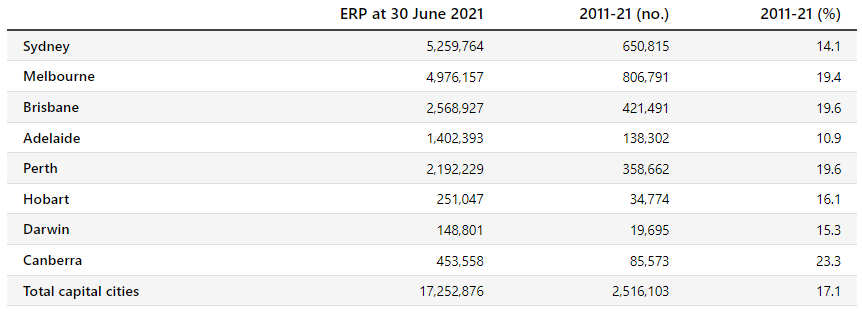
Mass immigration crush-loads our cities.
As shown above, the migrant epicentres of Melbourne (+806,791) and Sydney (+650,815) grew the most in number terms; although every Australian capital city recorded strong growth in percentage terms.
The below charts show the population change over the past 20 years, with Australia’s capital cities adding an insane 4,726,000 people, again led by Melbourne (+1,476,000) and Sydney (+1,157,000):
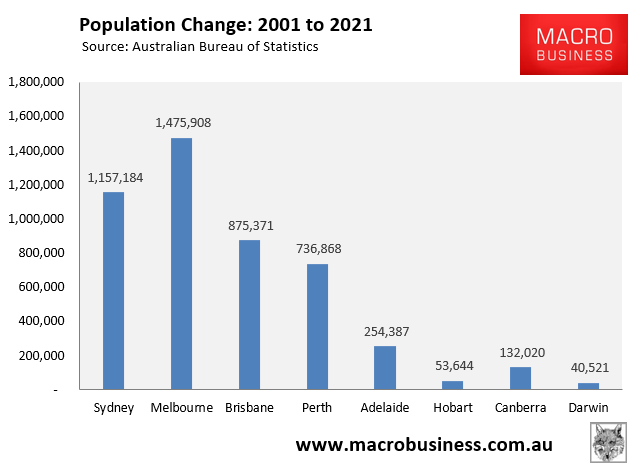
20 years of breakneck population growth.
However, in percentage terms, all capital cities experienced strong population growth:
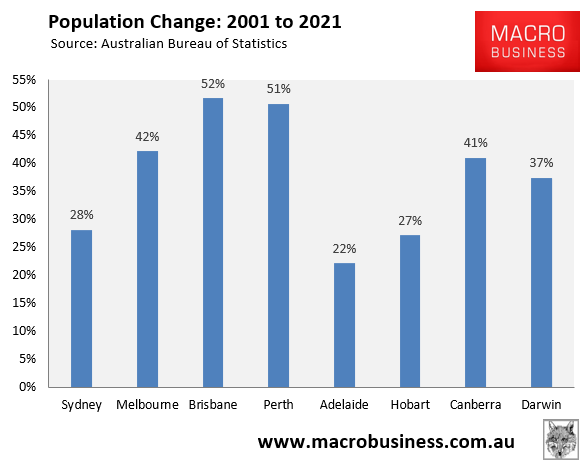
20 years of breakneck population growth.
Obviously, the primary driver of our cities’ extreme population growth has been mass immigration, which surged from the mid-2000s:
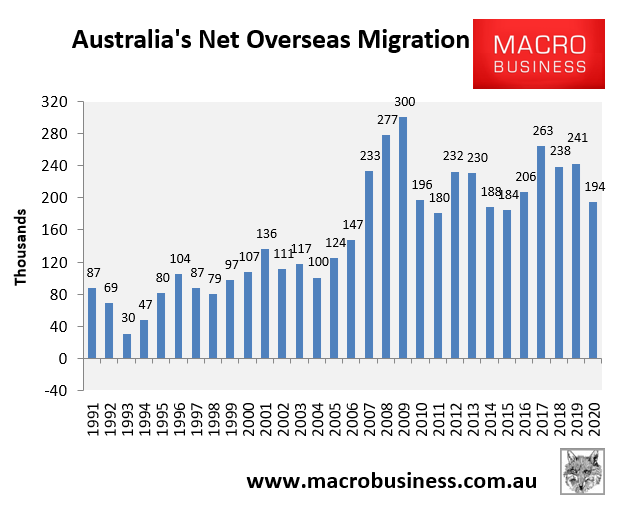
Australia’s net overseas migration surged from 2005.
Australia’s net overseas migration (NOM) jumped from an average of 90,500 between 1991 and 2004 to an average of 219,000 between 2005 and 2019 – representing an annual average increase in immigration of 140%.
The Intergenerational Report (IGR) projects that NOM will ramp up to 235,000 people a year for decades to come, swelling Australia’s population by 13.1 million (50%) over the next 40 years – equivalent to adding another Sydney, Melbourne and Brisbane to Australia’s existing population:
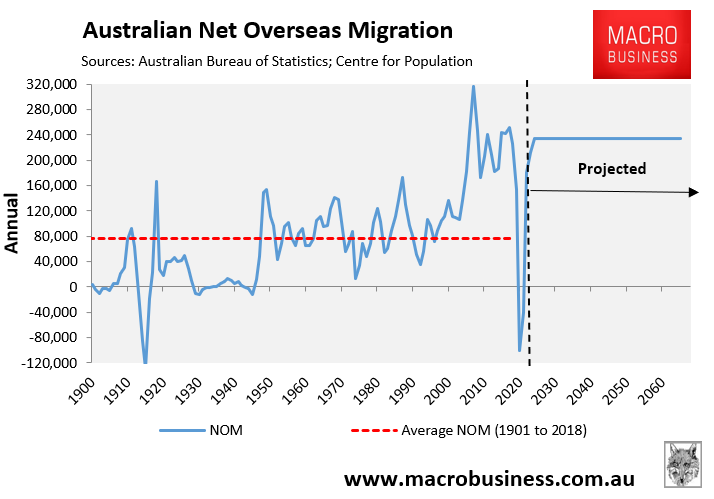
‘Big Australia’ immigration to lock in permanent housing shortages.
Recall what the latest State of the Environment Report (released last week) said about Australia’s rapid urban growth:
Most of Australia’s 8 major cities are growing at rates faster than many developed cities internationally. As our cities expand and change, so do their impacts. These include increased urban heat, congestion, pollution and waste, as well as growing pressure on our increasingly scarce resources such as water and energy. These impacts expand to the natural environment surrounding our urban areas and the biodiversity, green and blue spaces within them…
Because of the increasing ratio of building area to land area on lots, the space for trees, plants and outdoor recreation at both the front and rear of dwellings has declined. This change in urban form is not only changing the physical form and character of existing and greenfield neighbourhoods, but the ability to manage heat, improve walkability and thereby the livability or our urban environments. It is also reducing the extent of urban biodiversity by decreasing tree canopy cover and garden space…
Indications from the Albanese Government suggest it will go beyond the IGR and will ramp-up immigration to record levels following September’s jobs summit.
Thus, Australia’s capital cities will continue to grow like science experiments as millions of migrants are crammed in like sardines, and this will wreck Australia’s environment and liveability.
Why? Because that’s what Big Business, Big Property and the edu-migration lobby demand. Who cares what incumbent Australian voters want? Who cares about the natural environment?

